Euphorbia with an unusual triangular trunk is most often found in large offices, houses and cottages. This plant is native to America and Africa, it attracts attention with the unusual shape of its fleshy trunk and belongs to the group of succulents. In addition, the euphorbia trihedral is unpretentious in maintenance, and even a beginner grower can grow it: the flower quickly grows to large sizes and multiplies by both apical and lateral shoots.
Content
Characteristics of Euphorbia tregana
Euphorbia triangular belongs to perennial species, the genus Euphorbia and the family Euphorbia. Experts note that the plant does not bloom at home, but attracts with its fleshy stem of an unusual shape - it resembles a candlestick with candles.
The variety grows quickly, reaching 3 meters in height. The trunk is fleshy and trihedral, in a section of 6 cm. The branches are dissected, dark green with unexpressed white strokes, up to 20 cm in size. At the ends of the branches there are thorns 0.5 cm long, brown with a red tint. Oval leaves grow up to thorns, up to 5 cm long.
Signs and superstitions
The island of Madagascar is considered the birthplace of milk of trihedral, from which the flower spread to Africa and America. This is due to the fact that he loves the subtropical climate. Since ancient times, euphorbia has been used in folk medicine. According to history, this species was discovered by the healer Euphorbia in the 54th century BC, in honor of which the plant got its second name. To date, the flower is distributed around the world and is used as an indoor ornamental plant.
There are signs that the euphorbia protects the house from the influence of negative energy thanks to thorns on the shoots. That is why it is recommended to put a flower pot at the front door. There is also a belief that this type negatively affects sexual life, therefore it is advisable not to put a pot with it in the bedroom. According to Feng Shui, in the house where the euphorbia bloomed, which is very rare, a favorable atmosphere prevails.
Features of home care for milkweed trihedral
Euphorbia belongs to unpretentious flowers, and in order for it to grow actively, it is necessary to maintain a certain level of temperature, lighting and ensure regular watering and top dressing. It is also recommended to regularly wipe the trunk and irrigate it with water in the shower.
Watering and feeding
The plant is characterized by drought tolerance and can live without water for a long time. An excess of watering adversely affects the state of the root system - it leads to its decay. During the period of active growth and vegetation, experts recommend increasing the frequency of irrigation and making sure that the substrate does not dry out. In the summer, watered several times a week.
For irrigation use settled or filtered water, since the flowing water is very hard, and can negatively affect the growth of the flower. In winter, the frequency of watering is reduced or stopped altogether, so as not to provoke rotting of the roots. In cold weather, it is very important that the substrate has time to dry before a new watering.This variety is undemanding to air humidity, it is not necessary to spray it.
Feeding a young plant is carried out once a month so that the flower actively grows. Experts recommend using mineral nitrogen fertilizers during this period.
Light and temperature
This variety belongs to photophilous plants. Euphorbia can grow both in partial shade and on the windowsill from the sunny side of the house. It is thanks to the presence of thorns that the plant feels good in well-lit places. Despite this, the flower should be accustomed to the action of direct sunlight gradually, as burns may appear on the stem and leaves.
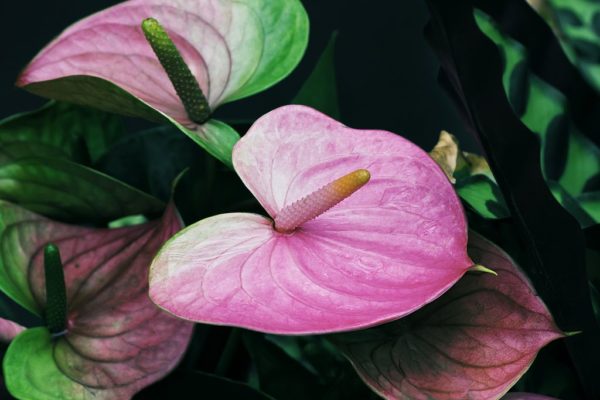 You may be interested in:
You may be interested in:With a lack of sunlight, the plant will begin to fade and cease to grow intensively. Experts recommend placing the pot on window sills from the South and East sides. In winter, it is necessary to use artificial lighting lamps to create comfortable conditions.
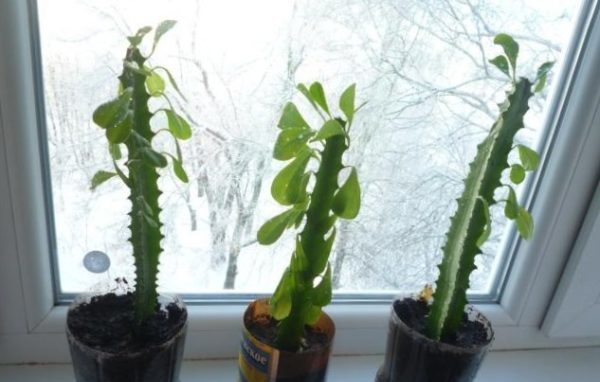
The most comfortable temperature regime for a flower is considered to be a temperature of 20 to 25 degrees. The triangular variety prefers heat, because it is still undesirable to put it in cool places, as well as in drafts. In the summer, experienced flower growers recommend taking the plant out onto the street or loggia.
Pruning
Euphorbia is cut so that the plant grows thicker and more magnificent. Pruning is carried out during the period when the flower enters the phase of active growth, that is, in late February and early March. For the procedure you will need a sharp knife or scissors. The flower juice is very sticky, so you need to select tools that can be easily washed off later.
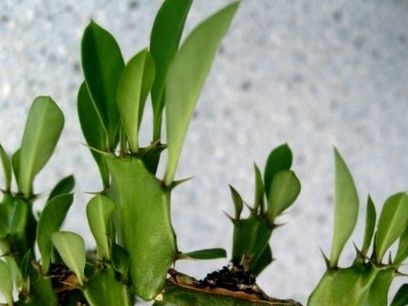
The top of the plant is cut by 10-15 cm. In advance, you need to prepare a rag in order to wipe the milky juice, which flows abundantly from the cut part of the flower. The juice is poisonous, so the procedure must be carried out with gloves and a mask.
The trimmed place on the stem is sprinkled with chopped charcoal in order to prevent infection of the plant with fungi and bacteria. Due to the fact that the top is cut off, the apical growth is slowed down, and the lateral growth is activated, and the flower becomes more magnificent and thicker. Cut parts of the plant can be used for propagation.
Transplantation and propagation of a flower euphorbia trihedral
Euphorbia is transplanted in the spring. Young specimens need to be transplanted every year, and mature ones, if necessary.
For transplantation, the flower is removed from the old pot, the roots are carefully inspected for rot and cleaned from the old earth. The pot for planting should be wide, but not deep, since the root system of the flower is superficial.
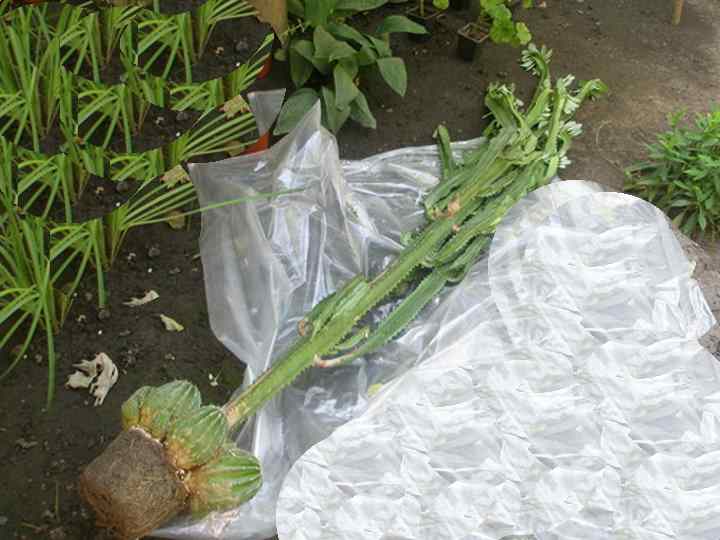
At the bottom of the pot spread drainage and sprinkle the earth. The main and very important condition for planting is a thick layer of drainage. The substrate for milkweed should contain deciduous and woody soil, peat, sand and humus.
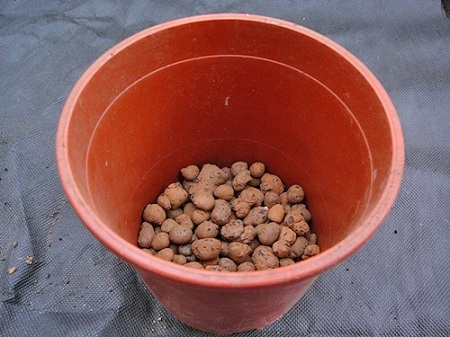
The plant is put in a pot and covered with earth. After planting, watered a few days later.
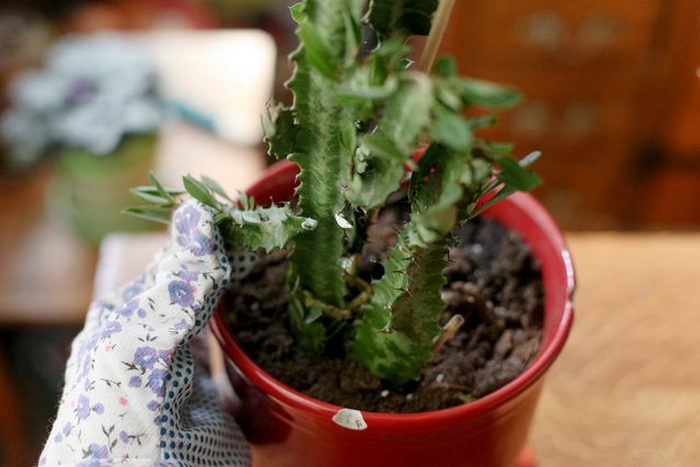
The adaptation of the flower after transplantation can last several weeks. Euphorbia may fade slightly during this period. When using the transplantation technique during transplantation, the flower is carefully transferred from one pot to another without cleansing the roots of the old substrate.
Propagation of the flower by cuttings
Milkweed can be propagated by cuttings, seeds or dividing the bush.The most popular are methods with leaf and stem cuttings.
To divide the stem cuttings, it is necessary to cut 10-15 cm of the trunk or use the residues after trimming. Parts of the flower are placed in warm water so that the milky juice is completely stacked. After that, the flowers are planted in a substrate made from peat and sand. After planting, the young plant is watered with warm water and covered with a film. The pot is placed in a dark warm place for rooting, which occurs after a few weeks.
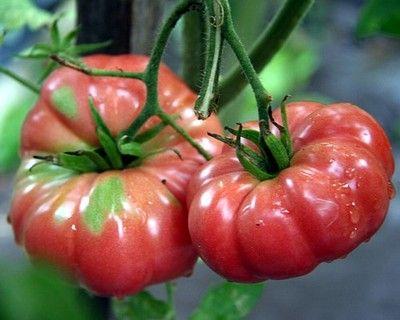 You may be interested in:
You may be interested in: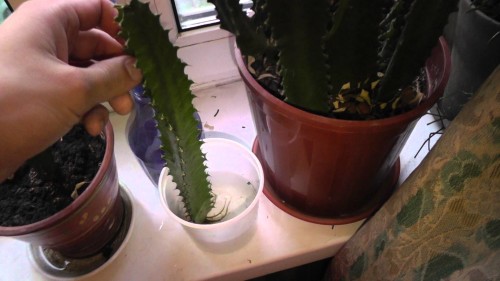
For propagation by leaves, it is necessary to tear a small leaf from the plant. After this, the leaf is sprinkled with a growth stimulator and planted on a substrate. The pot is covered with foil and put in a warm place, sometimes giving airing. After a month, the leaves take root.
Flowering milkweed
This species does not bloom in room conditions. In the natural habitat, the euphorbia has small white flowers. It is not possible to make it bloom, so it is worth perceiving it as a non-blooming species.
Benefits and harm to humans
It is believed that euphorbia absorbs electromagnetic radiation and purifies the air in the house from unpleasant odors. Also, due to the properties of the juice, the plant kills bacteria and germs. Despite this, the flower can interfere with sleep due to its light smell.
It also has poisonous juice, which can cause an allergic reaction in both humans and animals. In addition, juice in contact with mucous membranes causes their redness and inflammation, and if it gets into the eyes, it can deprive a person of vision.
In ancient times, euphorbia was used to treat corns and remove warts and parasites. In ancient India, milkweed juice helped neutralize snake venom after a bite. Today, doctors do not recommend the use of euphorbia for such purposes. When the plant juice gets on the skin, its redness and severe itching are observed. In some cases, this can lead to the development of cardiovascular failure.
Common Growing Questions
Euphorbia triangular - a common fast-growing flower. He attracts attention with the unusual shape of his stem and unpretentiousness in care. However, the plant is unsafe - it has a juice that is poisonous to humans, so when transplanting and pruning, gloves and a mask should be used.

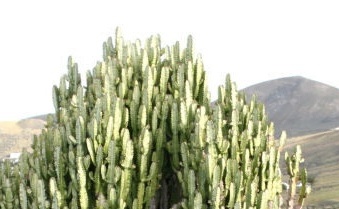
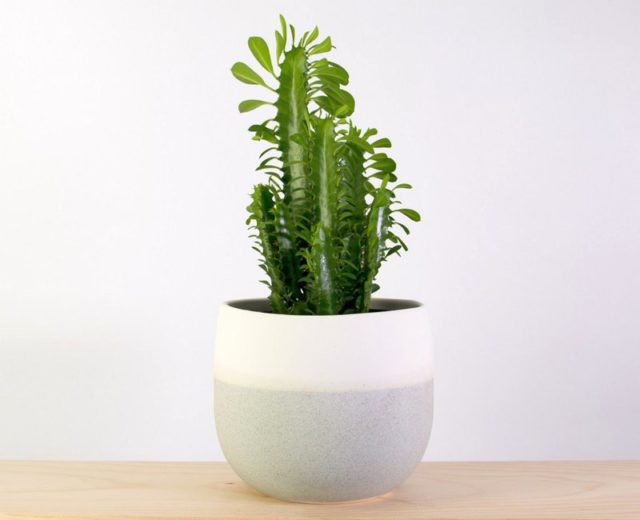
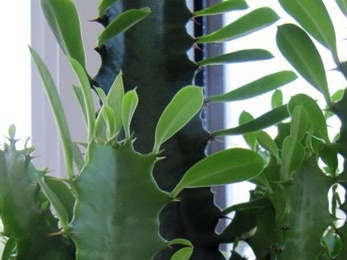
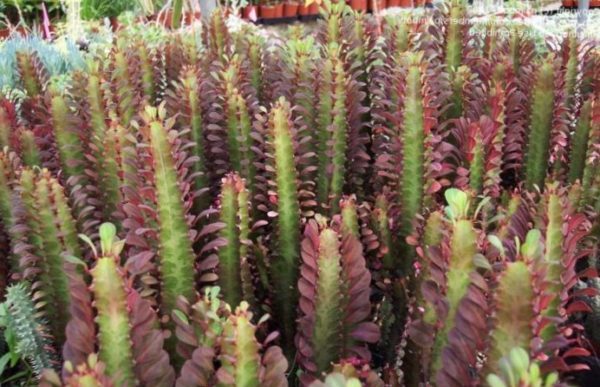
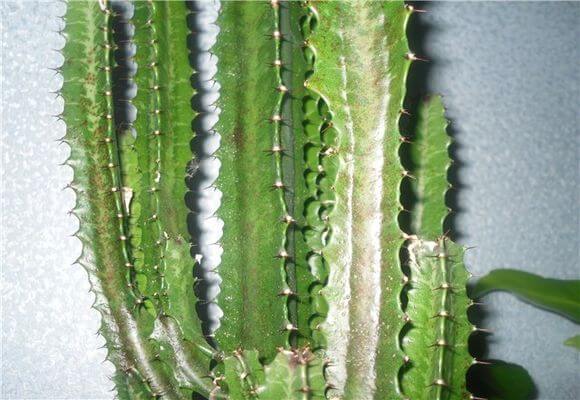
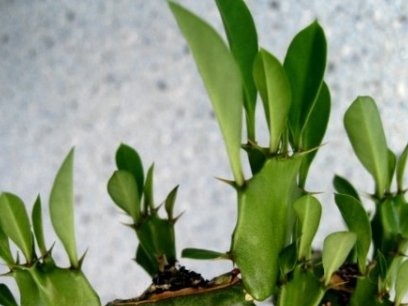



 10 beautiful annuals that bloom all summer
10 beautiful annuals that bloom all summer Sow in the ground, without seedlings: 10 beautiful and unpretentious flowers
Sow in the ground, without seedlings: 10 beautiful and unpretentious flowers Platicodon planting and outdoor care
Platicodon planting and outdoor care Hosta - planting and care in the open ground in the Urals
Hosta - planting and care in the open ground in the Urals